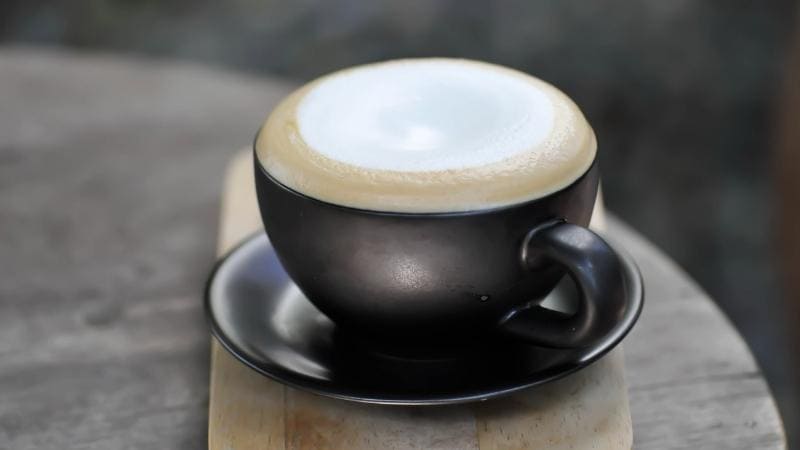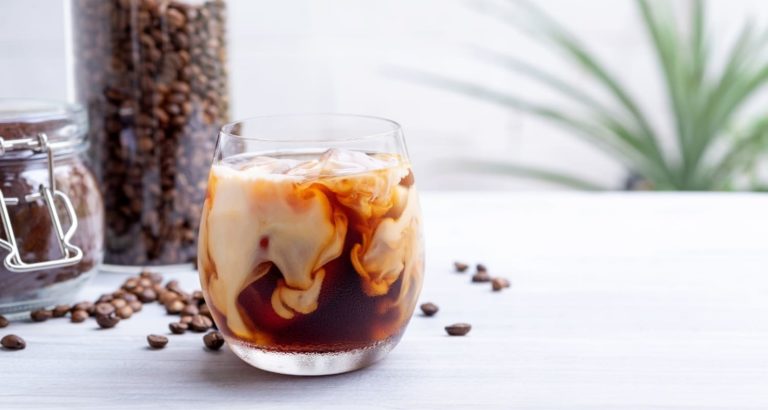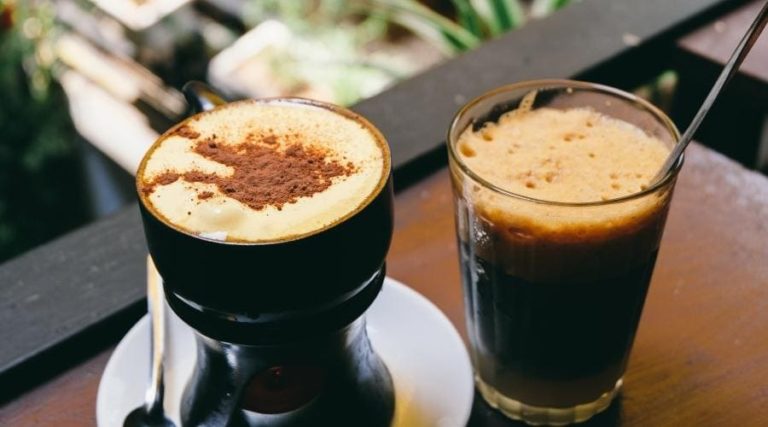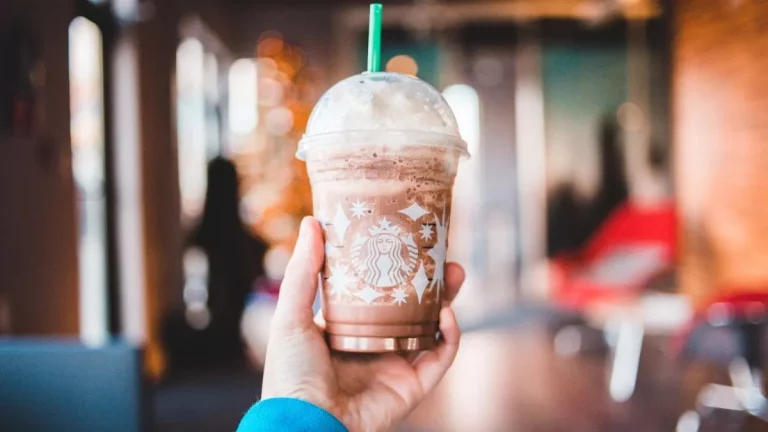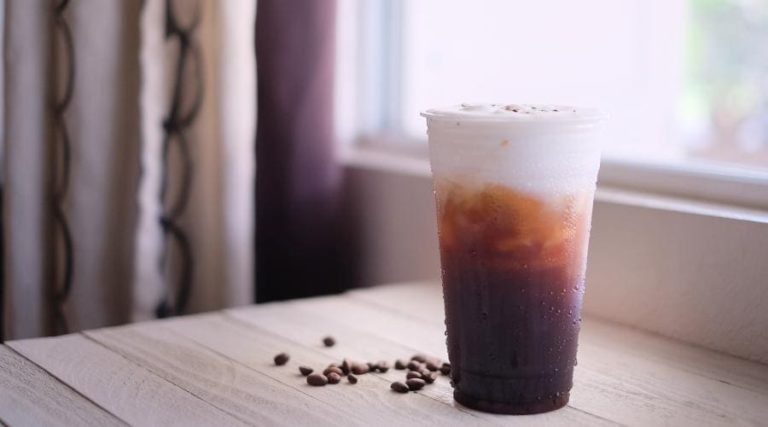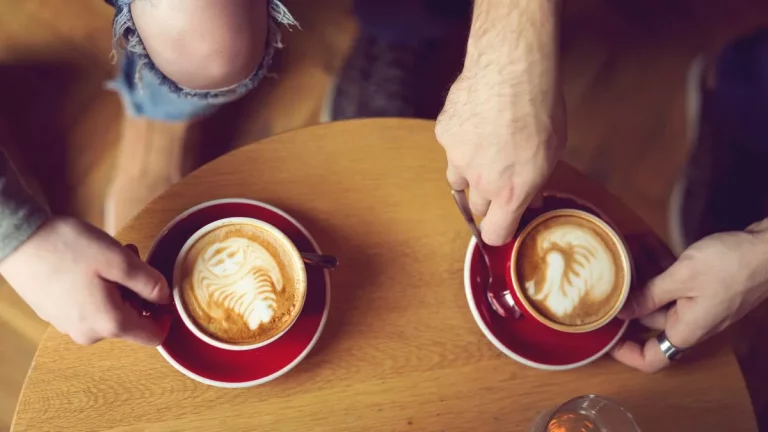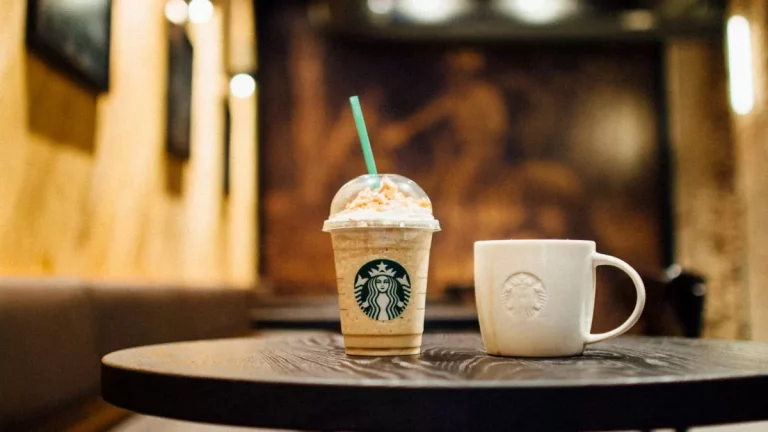Wet cappuccino and latte contain the same ingredients; milk foam, steamed milk, and espresso, but some differences exist between the two espresso drinks, and they are pretty straightforward.
Wet cappuccino vs Latte
A wet cappuccino is smaller in size, and stronger in flavor, with less milk and more milk foam. Alternatively, lattes are creamier with far less milk foam or even none in some cases. Typically, a wet cappuccino contains around 25ml of espresso and 100ml of steam-formed milk to perfectly fit in a 160ml (5.4-ounce) cup.
That being said, other discrepancies generally vary from country to country and between cafés.
Although wet cappuccinos are closer to lattes, it’s generally considered a cappuccino, provided the milk has noticeable milk foam on the surface. However, if it is a super wet cappuccino, you are probably served with a latte.
Best for you?
A wet cappuccino is worth trying if you find regular cappuccinos too strong for your taste or lattes too milky.
Although a wet cappuccino uses the same amount of milk as a regular cappuccino, the increased volume of liquid milk dilutes the coffee, creating a creamy, smoother, and rich texture and flavor. However, if you want to enjoy a mild coffee with a creamy texture, then order a latte.
Wet Cappuccino vs Latte Caffeine Content
Assuming only one shot of espresso is used in both drinks, a wet cappuccino and a latte usually have the same amount of caffeine. The amount is about 75mg for each coffee drink.
Differences in ingredients:
Lattes contain a higher volume of milk and are rich in calories, protein, and fat. The average shop-bought latte contains 206 calories, 13 grams of protein, and 8 grams of total fat.
On the other hand, Wet cappuccinos contain a bit less milk but still provide a good number of calories, protein, and fat in every serving. A shop-bought cappuccino typically contains 130 calories, 8 grams of protein, and 5 grams of total fat.
Wet Cappuccino vs Latte – How they’re served
Wet cappuccinos are often served in a small (150 to 180 ml) ceramic cup. On the other hand, lattes are typically served in a 240ml cup or glass. Wet cappuccinos are usually more concentrated, which basically means that a wet cappuccino is a much stronger drink than a latte.
Wet Cappuccino vs Cappuccino
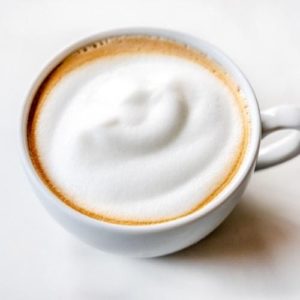
You probably know what you’ll get when you ask for a cappuccino at your local café. Generally, a basic cappuccino is made with 2/3 milk and 1/3 espresso. That means a single shot of a cappuccino contains approximately two ounces of milk and one ounce of espresso.
In a cappuccino, the milk part is further split into frothed milk foam and liquid milk. A basic cappuccino uses almost equal parts of regular milk and milk foam.
However, things get a bit tricky when it comes to wet cappuccinos. The main difference is that A wet cappuccino, by definition, is a cappuccino with less milk foam and more milk than usual.
Most local cafés use about the same proportion of milk in a standard cappuccino for their wet cappuccino, only that the milk content is divided into 75% milk and 25% milk foam instead of splitting equally.
Wet Cappuccino vs Cappuccino Flavor and Texture
Due to the higher ratio of steamed milk to espresso, wet cappuccinos have a more homogenized and tastier flavor profile. The espresso is evened out by the liquid milk, which softens the bitter side of a darker espresso. However, it may tone down the flavor of lighter and more nuanced roasts.
When making a wet cappuccino, less air is allowed into the milk than in a regular cappuccino.
This results in fewer bubbles and a more mellowly textured milk and espresso drink. Because of the ratio change in milk to foam, the drink will appear more like a flat white or latte in its texture.
And because of the controlled milk consistency, it is also likely to have some latte art on the top.
Pros of drinking a Wet Cappuccino
- The steamed milk that balances out with the espresso result in a mellower, smoother texture
- Milk and espresso are less likely to separate due to the additional milk, so the drink can be left to cool for longer
- A wet cappuccino has a less bitter and sweeter flavor
- Latte art on the top can be perfect for social media
Known cons of a Wet cappuccino
- The espresso drink is not seen as traditional
- The additional milk may cancel out the flavors of lighter roasts
Brief Latte explanation:
A latte, also known as a café latte, is a classic coffee made up of a single or double shot of espresso, steamed milk, and a thin layer of frothed milk on top.
A latte is 1/3 espresso (usually 1 or 2 shots) and two-thirds steamed milk, topped with a layer of frothed milk.
The standard size of the latte ranges between 10 to 12 ounces, but baristas can easily adjust the size for you by tweaking the ratio of espresso to milk.
For a more detailed guide on latte, you can also check out my article dedicated to the popular latte drink.
There are many varieties of a latte, among which are a mocha latte (a latte with chocolate syrup) and an iced latte (frozen coffee with milk)…
That said, Latte is not just limited to coffee drinks. The name latte also represents non-espresso-based drinks that contain steamed milk, including matcha latte (powdered green tea with milk foam) and chai latte (flavored black tea with milk foam).
A latte is the creamiest form of coffee and is considered a solely morning drink. You can also add ice to a latte and serve it cold as a refreshing drink in hot weather.
However, if you suffer from nausea, stomach ache, or bloating, it’s most likely your morning latte might be the culprit. If you are experiencing one of these lactose intolerance symptoms, it might be the time to order a latte made with a plant-based alternative such as oat, soy, or almond tree.
The Flavor and Texture of a Latte
Since lattes typically have twice as much milk as most other espresso drinks (Except for the Galao), they are usually creamy. The coffee flavor is still there, but it’s densely masked by the sweet milk, making the latte an excellent choice for newer coffee lovers.
The steamed and frothed milk used for the café latte adds a hint of chewy sugar sweetness, while the 1cm of milk foam on the top creates a smooth and creamy texture.
Pros of a Latte
- The drink is less acid
- Latte is less bold and sweeter
- The coffee flavors are blended as one
- A cup of latte is much creamier because of the milk foam and the extra milk added
Cons of a Latte
- The fragrant flavor of espresso is too soft for intense coffee lovers
- Since the drink contains more than 80% of milk, a cup of latte may be comparatively high in fat
Wet Cappuccino vs Latte Recipes
The wet cappuccino requires a single shot of espresso, followed by adequate addition of steamed milk, then a thin layer of foam across the top. The secret is an equal amount of steamed and frothed milk. This way, you get a wet or classic cappuccino.
This coffee drink will be a little closer in flavor to what you would expect from a latte, with espresso flavor coming out a bit more mildly than usual.
Latte Recipe
A latte also starts with one shot of espresso, though some recipes may include two shots or a double ristretto shot (Updosed espresso). But either way, the preparation is still the same.
Pour the espresso shot(s) into a latte cup and top it with adequate steamed milk. You need 5-6 ounces of steamed milk to make a classic latte. Add a thin layer of milk foam on top, and your latte is ready for decoration.
When making lattes, you can also add flavored syrups or powders, including flavors such as caramel, vanilla, and hazelnut.
You will need an espresso maker or a Moka pot to make to prepare either a wet cappuccino or a latte.
FAQ
Which is Stronger a Latte or a Wet Cappuccino?
A wet cappuccino has a much stronger espresso flavor than a latte. Lattes usually use a relatively higher concentration of milk, but you can make a stronger drink by adding one shot to either coffee beverage.
Final thoughts
Cappuccinos and lattes are arguably the most popular beverages in the coffee world, besides a traditional cup of drip coffee or perhaps water.
These two Italian espresso drinks contain almost the same ingredients; espresso coffee, steamed milk, and milk foam on top, but their preparation leads to two different drinks with distinct textures, tastes, and finishes.
For example, the latte’s creamy texture is so popular that it has been used to make non-caffeinated drinks such as chai latte or matcha latte.
Furthermore, not all local cafés and coffee lovers know how a latte and wet cappuccino compare.
Each coffee drink contains different ingredients, so whichever coffee drink you order on your next trip to the local café depends on your personal taste and preferences.
In this article, we took a deeper look into the differences between these two popular coffee drinks so that the next time you are at the local café, you can order like a pro.

